By Day 24 we had less than 300 miles left to go and it felt like we were approaching the finish line. Making 100 miles a day seemed doable given the forecast, so we expected to make landfall within a few days. Since we ran out of fuel in the main tank back in the doldrums we had used up one of our three jerrycans of diesel to keep the batteries charged up each day. Conditions finally seemed calm enough to break out our new generator to charge the batteries instead of running the main engine. The generator uses gasoline instead of diesel, and only takes about a gallon a day to keep the batteries charged up. We estimated we had about a nine day supply of gasoline to keep the batteries charged, if needed. The only other thing we have that used gasoline is the outboard motor on the tender.
Feeling the end of the trip nearing, I began to reflect on the last few weeks. I thought about what I expected the crossing to be like versus how it actually played out. I thought I would have so much free time to kill and wondered how I would deal with the long days at sea. I prepared for the trip by downloading as many books, movies, and podcasts as I could before I left. I even bought a French travel phrase book and downloaded a few French teaching audiobooks hoping to have some basic words and phrases down by the time we arrived. I hoped my biggest problem would be staving off boredom but I found it almost impossible to feel bored at sea. Even the smallest things seem to take a lot of effort and planning. Your body and mind go into a kind of survival mode to conserve energy.
While on watch, I sat attentively watching the wind strength and direction, observing the sea state, and tracking our course. Occasionally, I could listen to a podcast or audiobook but found that whenever I took my attention off the ocean, the conditions seemed to become less comfortable. Instead, I began focusing my thoughts, in a kind of meditative state, on a calm wind and a gentle sea, effortlessly gliding us along. While off watch, I slept and ate as much as I could, given the sea state. Eitan and I tried watching a few episodes of a TV show, but even this sometimes felt like too much work for my brain to deal with.
When I wasn’t sleeping, I continued my meditation about calm conditions or simply just laid in the cabin in thought. I thought about the greater meaning of my trip and what had I learned. Why had the conditions been rougher than forecast and so persistent?. From the first few weeks after departing San Diego in 2020, I used to think of SV Sierra Wind as a kind of delicate boat, where any number of critical parts could break at any moment, potentially leaving us stranded. This trip made me realize she is a much stronger vessel than I could have imagined and the only thing that broke as a result of the conditions was one sail car. I became immensely grateful for our extended time in Mexico that was used to shakedown the boat and make the improvements and modifications that we carried into this trip.
Despite the trip being generally uncomfortable, in hindsight the totality of the crossing wasn’t nearly as bad as what I had perceived to experience day to day. In the moment, even small mishaps seemed like they could snowball into catastrophes, being so far away from land. It was the perfect environment for my anxiety to run wild and I saw how much it was driven by irrational fears that spiral out of control. Would I make the crossing again? Probably not. Am I glad I did it? Absolutely!
My attention focused back to the remaining trip. The 300 miles left to go became 200 miles, then the miles seemed to fly by once we had less than 100 left. From what I had heard, smelling land for the first time after weeks at sea was supposed to be an incredible experience. Unfortunately, smelling land is a bit difficult coming from the windward side of the island and the only sign we were approaching land was the flocks of birds we began seeing. We hadn’t even seen another boat in over two weeks. Simone was the first person to see land, at 6:18AM on Day 26. I imagined we would see a small bump on the horizon that would grow bigger and bigger as we approached. However, given the atmospheric conditions, the large mass of Ua Huka just suddenly appeared to us through the hazy horizon and clouds off the port bow.
It took a couple more hours for us to see the outline of our destination island, Nuku Hiva. We planned to sail into the bay of the main anchorage before dropping the sails, but as we entered the gap between the two islands, there seemed to be an opposing current causing the swell to double in size. Despite going downwind, we were once again bashing and bobbing, not what we expected of our final approach from such a journey. We were finally close enough to empty our last jerry can of diesel into the tank, drop the sails, and motor into the bay.
As we made the final turn into the bay we saw an anchorage filled with over 50 sailboats. Not quite the remote island vibes we were expecting, but our friends who had arrived a week earlier warned us about this. We approached the fuel dock at 3:00 pm on March 29, officially ending our crossing. I expected the fuel dock to be similar to those in Mexico but was surprised to find a gigantic facility, more suited for fueling cruise ships than small sailboats. The culture shock of being in a new country was immediately apparent since the dock attendant only spoke French and Marquesan. We managed to communicate with hand gestures and found we could only tie off to the dock “Med moored” stye, meaning we dropped the anchor and tied up with the stern to the dock. It was a good feeling to fill up our main tank and jerrycans once again. Given this set-up, we couldn’t disembark just yet and Eitan had to pass his credit card to the operator using a plastic bag taped to the boat hook.
After we left the fuel dock, Eitan navigated us through the crowded anchorage and we dropped the hook next to our friends on SV Kismet, who we departed San Diego with a year and a half ago. What an amazing feeling to finally arrive and crack open our Pacifico beers in celebration. Suddenly, the journey didn’t seem so bad and all my anxieties and problems couldn’t seem less significant.
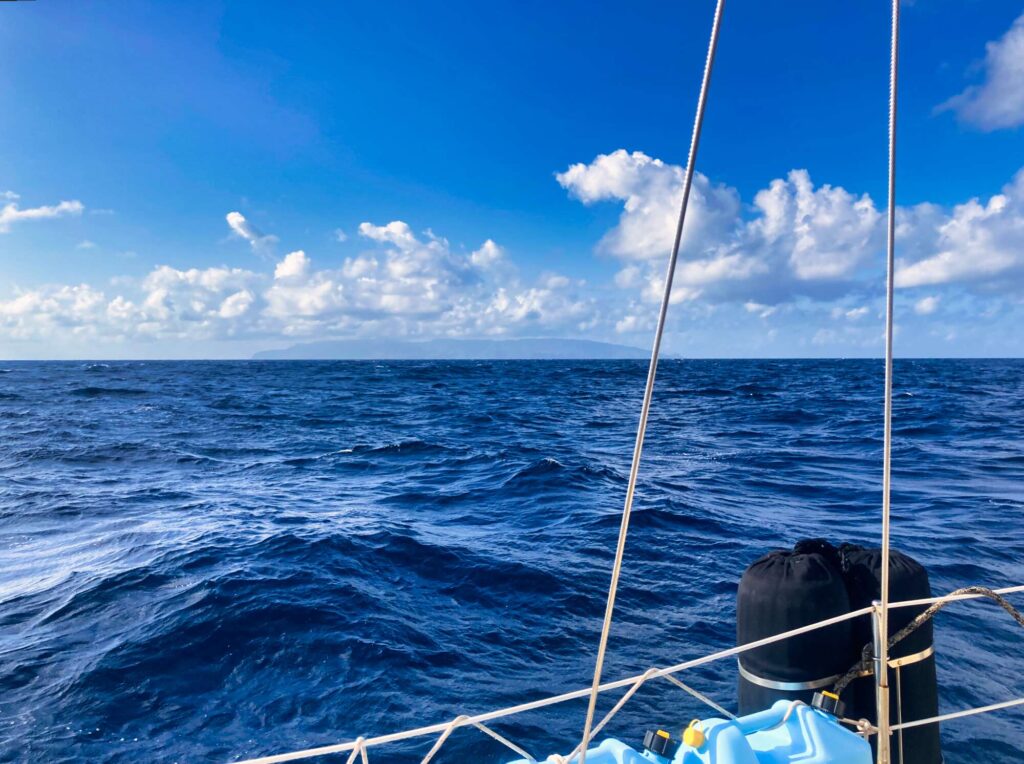
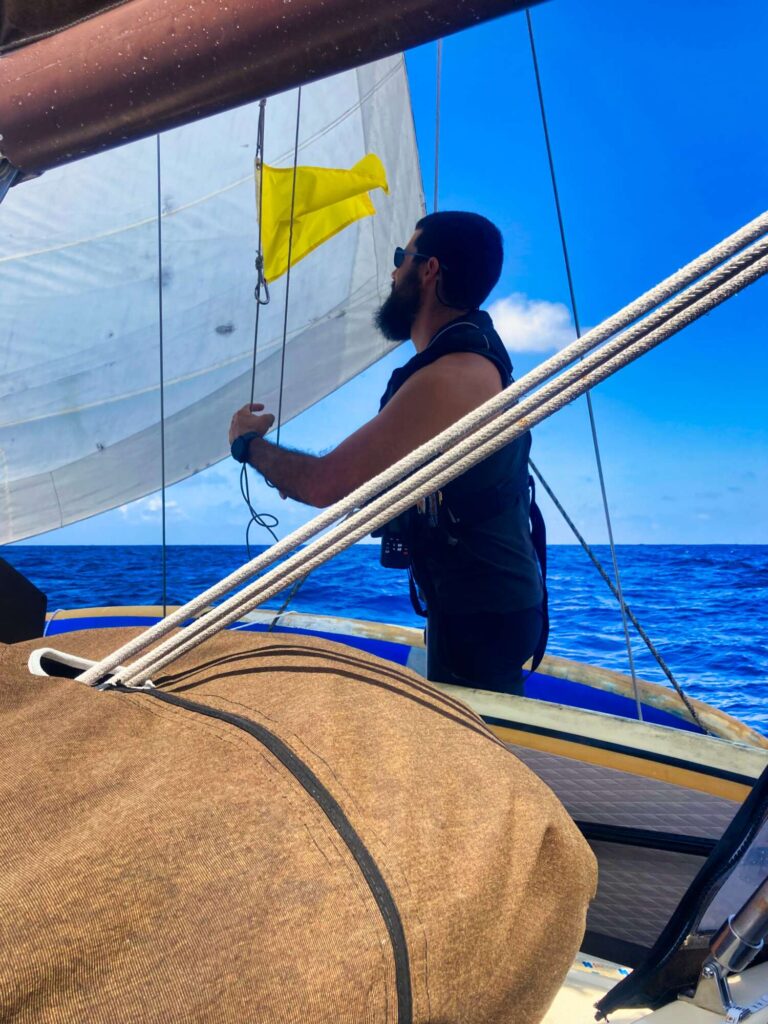
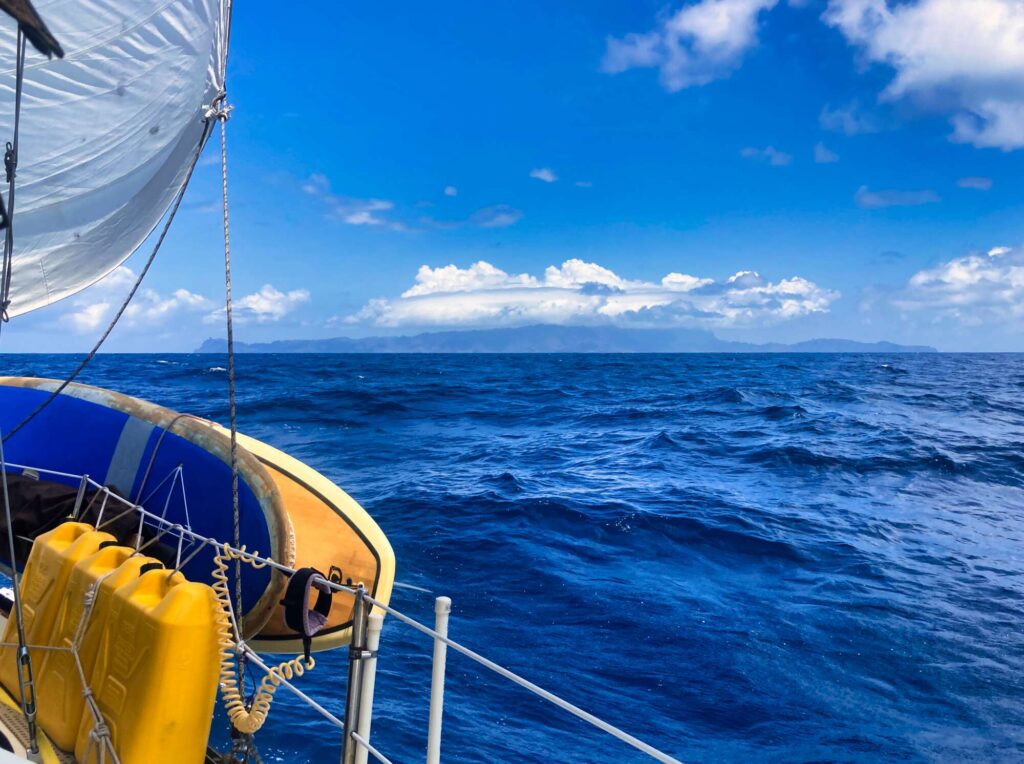
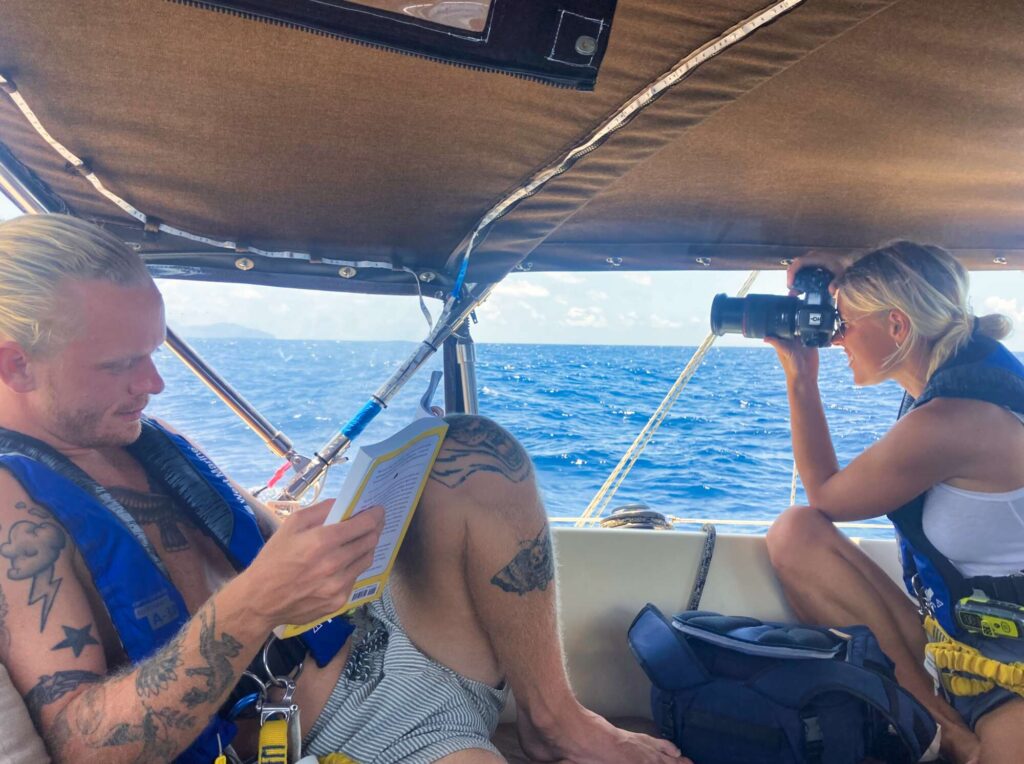
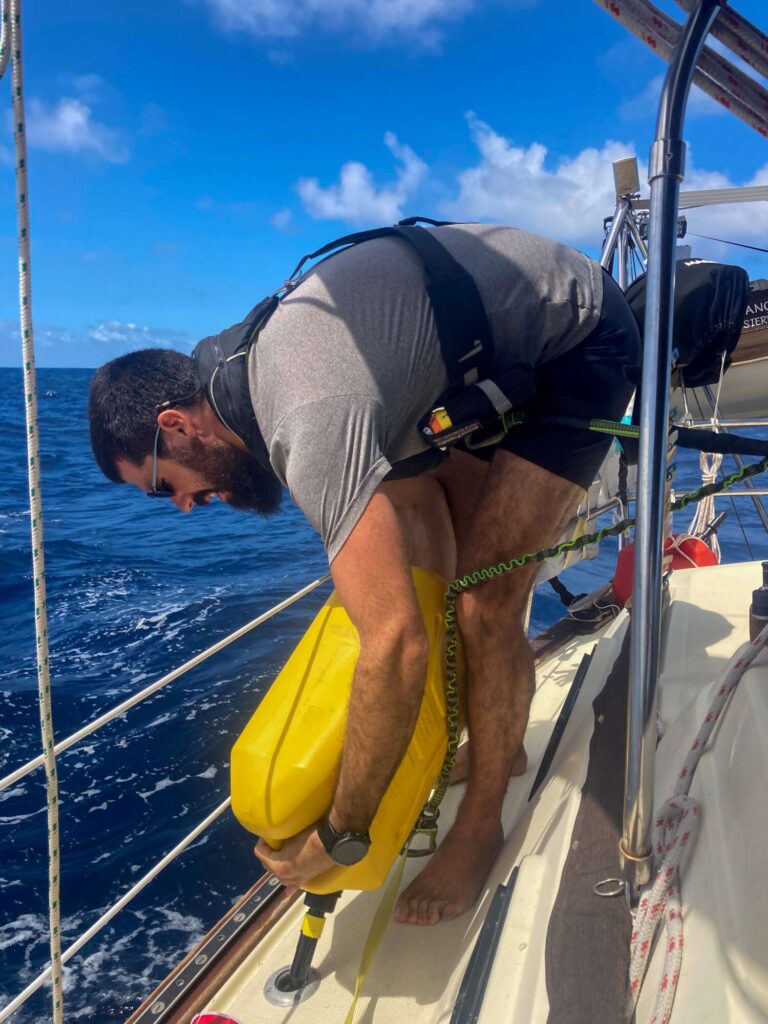
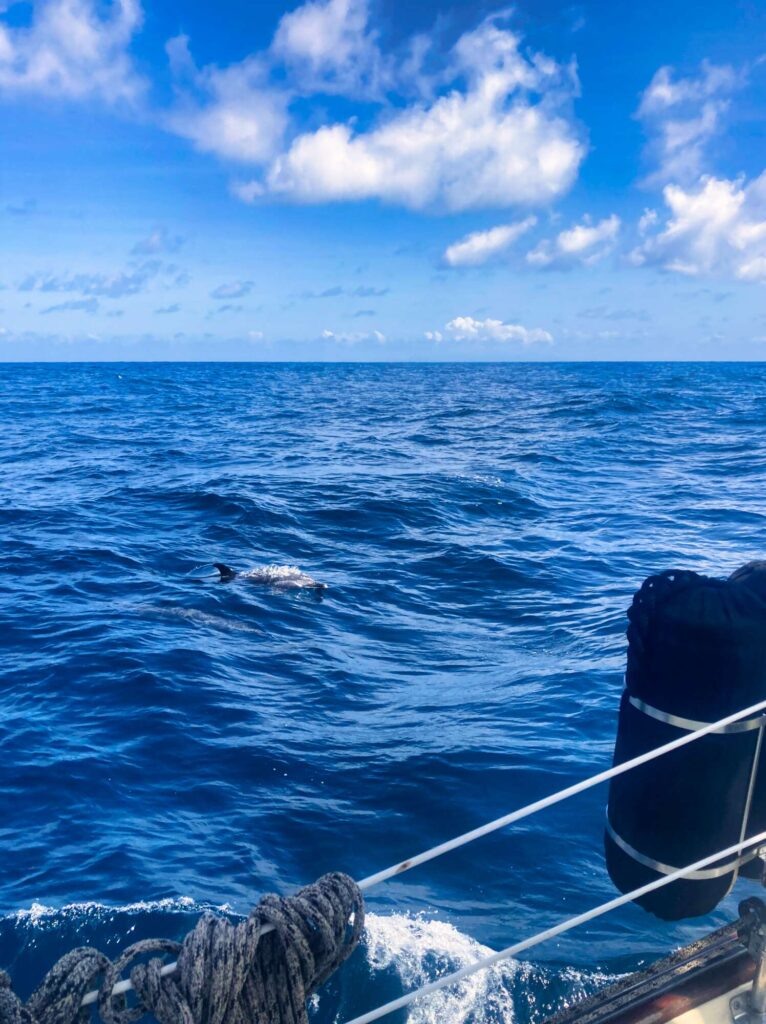

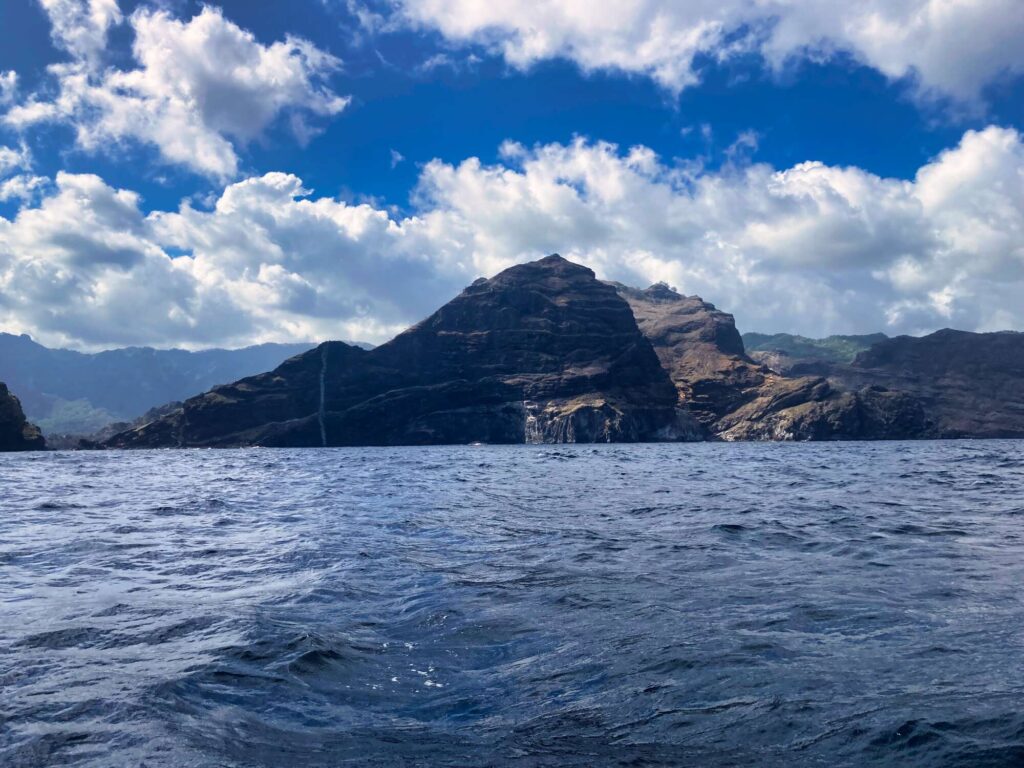
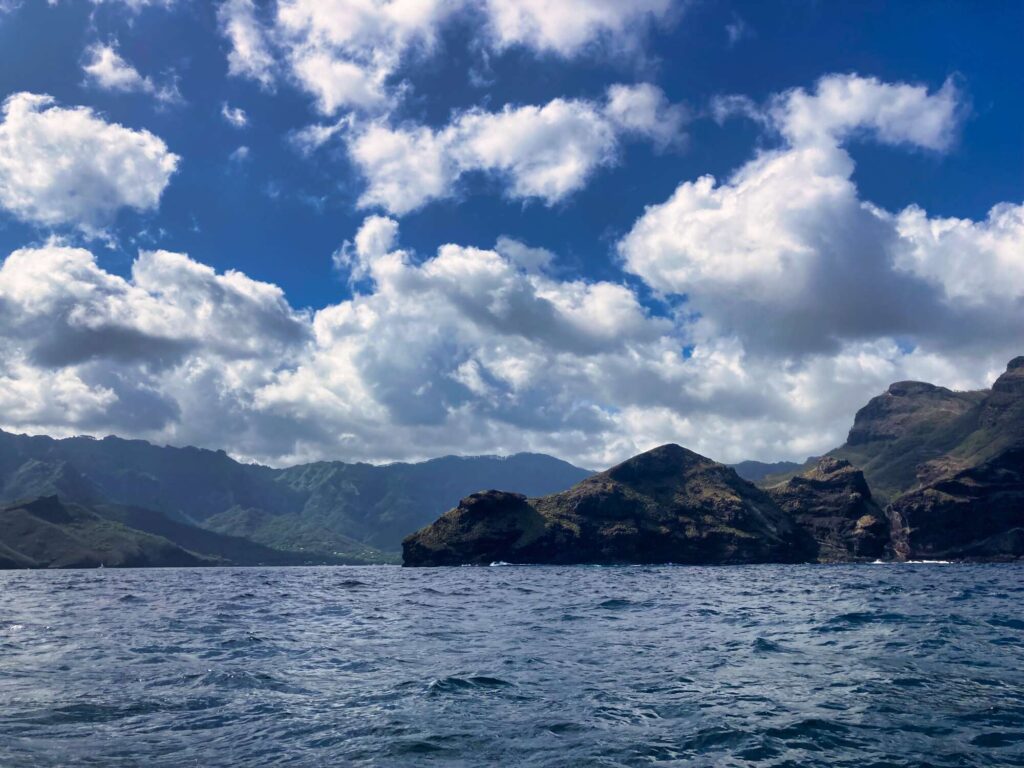
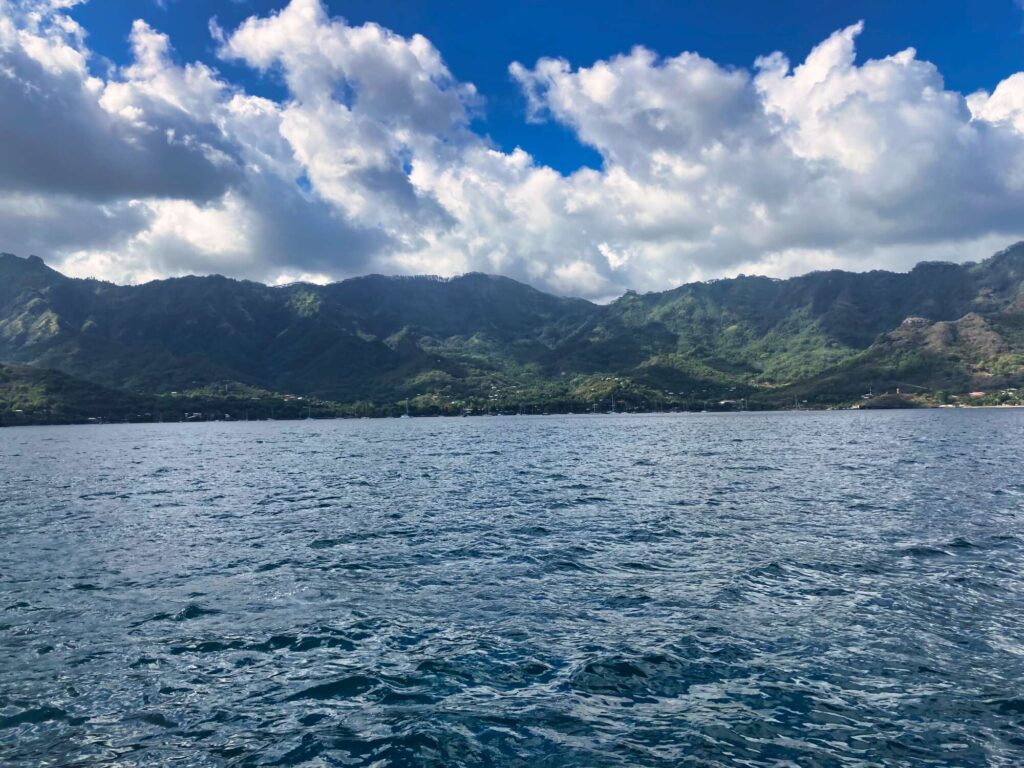
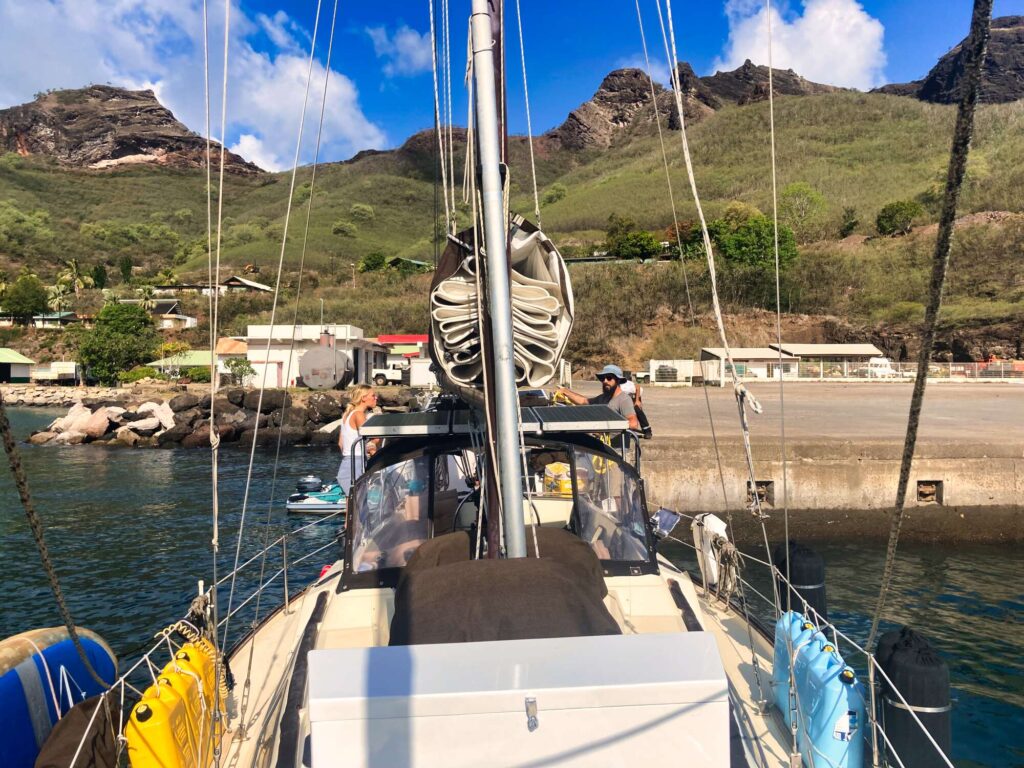
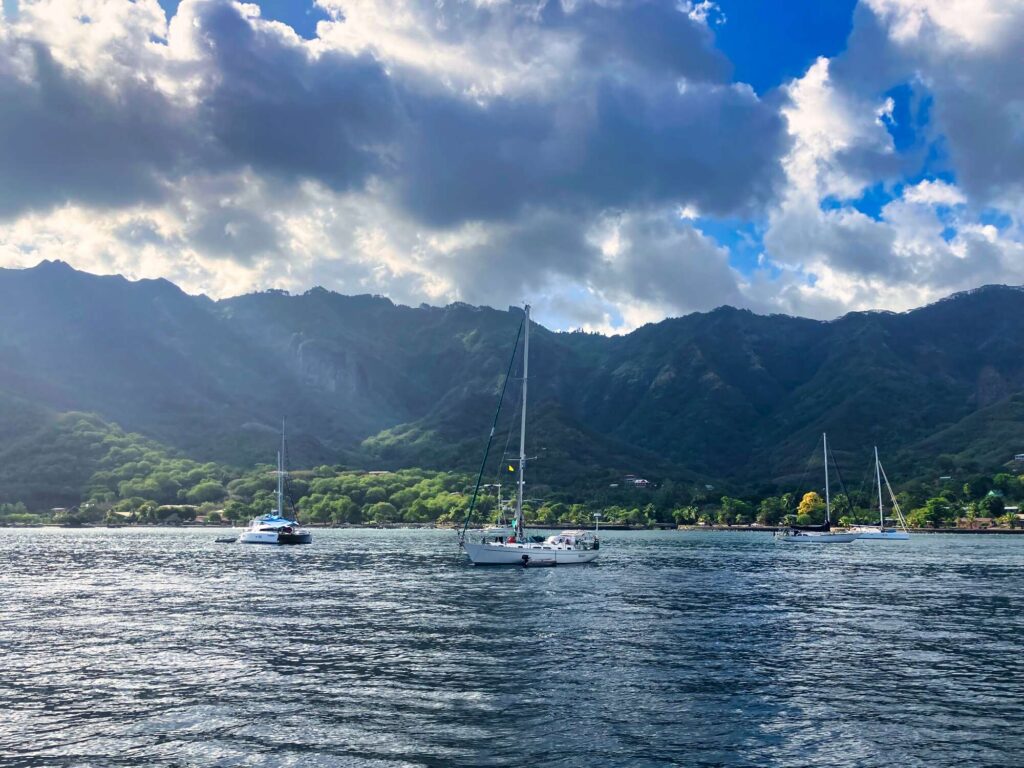
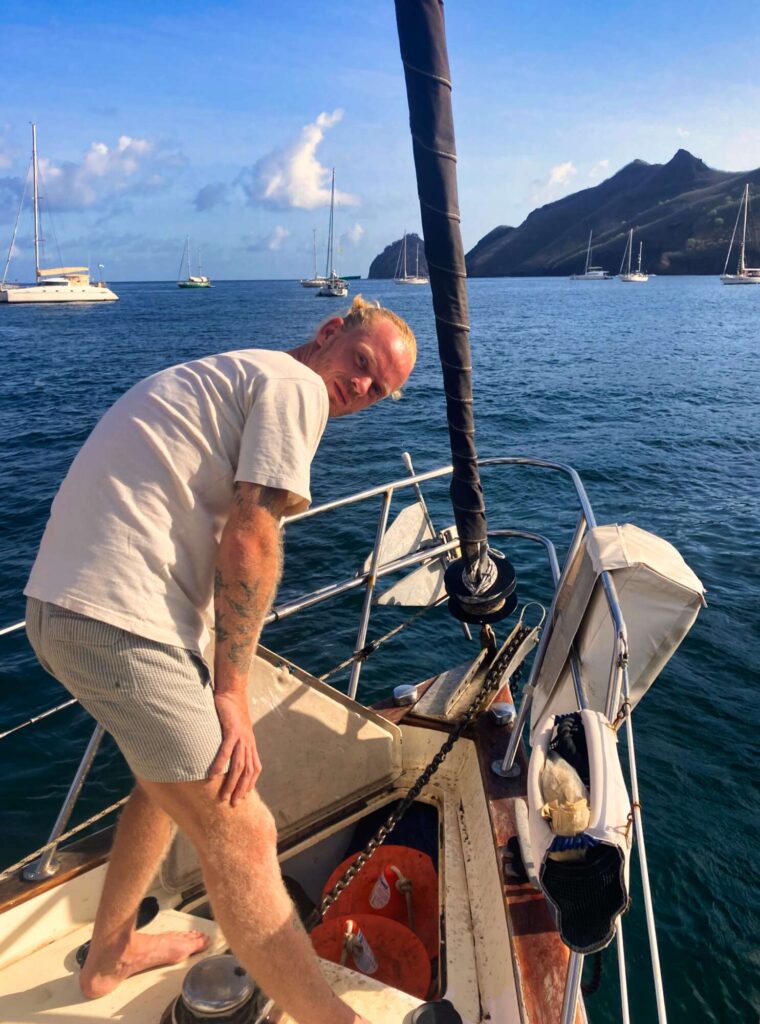

So exciting! I’m not sure how you crossed the Pacific and where it is that you landed. Would love to know more.
So exciting! I’m not sure how you crossed the Pacific and where it is that you landed. Would love to know more.